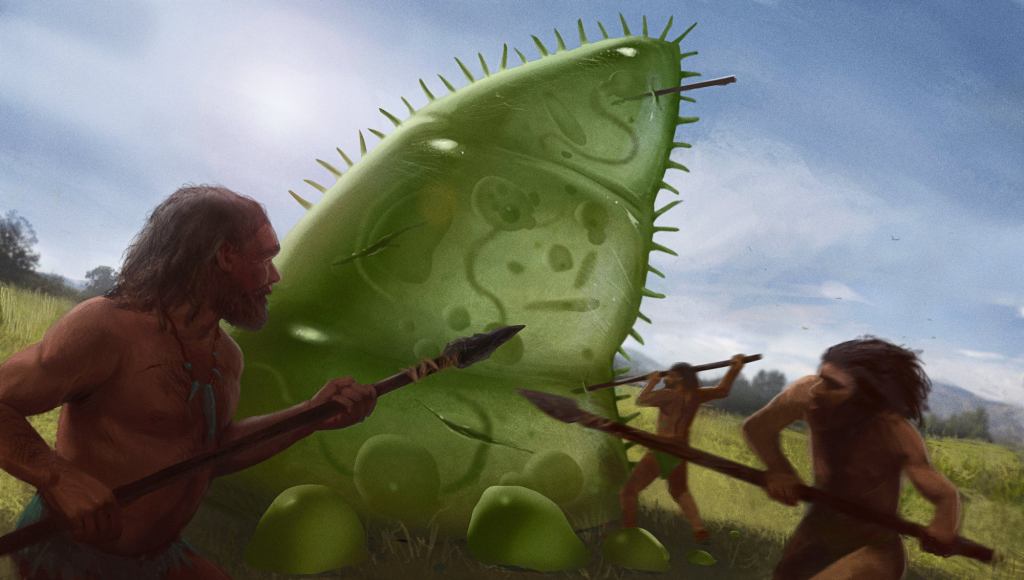SPOKANE, WA—Confirming long-held suspicions about the diminutive size of modern-day bacteria, paleontologists at Gonzaga University engaged in an intensive study of the fossil record announced Friday that they had found overwhelming evidence supporting the theory that early humans hunted the 25-foot paramecium and other mega-Protista to extinction. “According to our findings, early humans would routinely hunt giant amoeba, feasting on their cytoplasm and utilizing all organelle parts in the making of tools and garments,” said head researcher Dr. Lorraine Logan, clarifying that the building-sized bacteria had no natural predators, rendering them easy targets for early man armed with rudimentary flint hunting weapons. “My team uncovered the fossilized remains of a masta-paramecium whose cell wall had been pierced with almost two dozen arrows and whose Golgi apparatus had been painstakingly removed with obsidian knives, presumably to fashion into rope and bowstrings. We can also say with some certainty that early man harvested the mega-Protista’s cilia, which grew to impressive lengths in their prehistoric form.” Researchers also found a fossilized paramecium containing fragments of human bone, suggesting that the single-huge-celled organisms regularly fought back.

Fossil Records Indicate Early Humans Hunted 25-Foot Giant Paramecium And Other Mega-Protista To Extinction
Published:
Explore Tags






